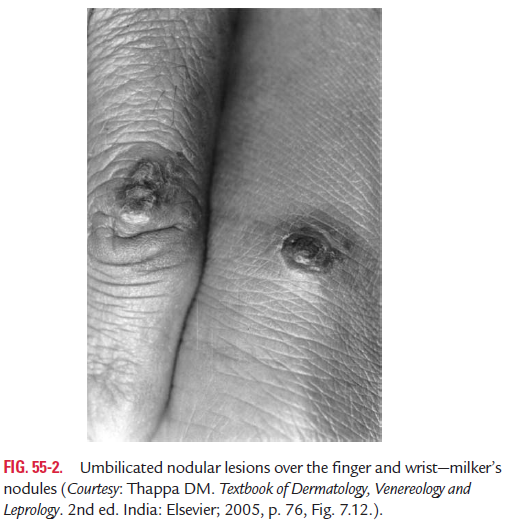Chapter: Microbiology and Immunology: Virology, Virus: Poxviruses
Cowpox
Cowpox
Human infection with cowpox is usually an occupational hazard. Cowpox resembles antigenically variola and vaccinia viruses but can be differentiated by the hemorrhagic lesions it produces on CAM and rabbit skin.
Cowpox infection in cows produces ulcers on the teats and udders. It may spread to other cows and humans during the process of milking. Natural cowpox infection has also been noted in wild animals kept in zoos including cheetahs and ele-phants and also in domestic cats. Rodents or cats but not cows have been suggested as the primary host of cowpox infection.

Milker’s node or paravaccinia is an occupational disease acquired by humans during the process of milking of infected cows. The common lesions include small ulcerating nodules (Fig. 55-2). The condition presents as painful and hemorrhagic lesions on the hands and face (Color Photo 55) associated with pyrexia and other constitutional disturbances. The virus is distinct from cowpox and grows in bovine kidney cell culture, but not in embryonated eggs.
Related Topics